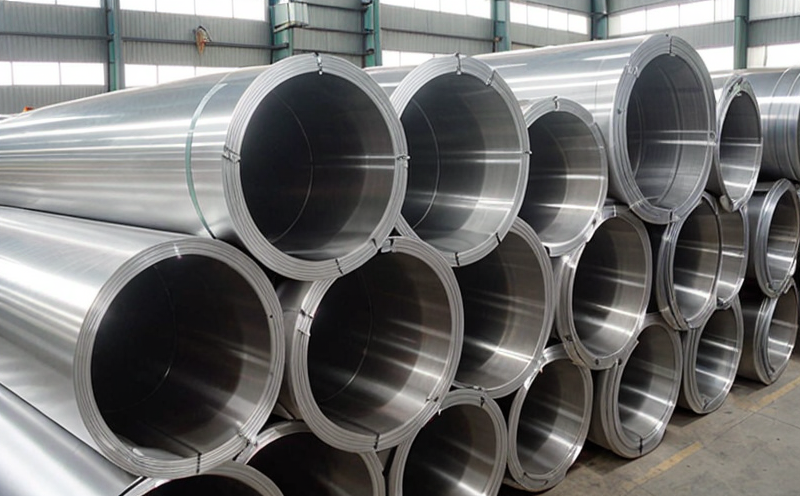Pull Off Adhesion Strength Test
The pull-off adhesion strength test is a critical assessment method used to evaluate how well an adhesive bonds two substrates or materials together. In the context of marine and ship equipment testing, particularly when dealing with aluminium materials, this test ensures that the chosen adhesive will perform reliably under the harsh conditions found in maritime environments.
Aluminium is widely used in the construction of marine equipment due to its light weight, durability, and resistance to corrosion. However, even high-quality adhesives require rigorous testing to ensure they can withstand the stressors unique to this sector, such as saltwater exposure, temperature fluctuations, and mechanical impacts. The pull-off test simulates real-world conditions by measuring the force required to separate bonded aluminium surfaces.
During this process, a specimen consisting of two aluminium plates is prepared with an adhesive layer in between. A fixture then applies a controlled load until the bond fails. The resulting strength value provides vital information about the durability and reliability of the adhesive used in marine applications. This test is often conducted according to international standards such as ISO 4589-1, ASTM D3651, and EN 20725.
Understanding the importance of this test for aluminium materials in marine equipment is crucial for quality managers, compliance officers, R&D engineers, and procurement specialists. By ensuring that adhesives meet or exceed specified standards, these professionals can enhance product performance while maintaining cost-effectiveness throughout their supply chains.
The pull-off adhesion strength test serves as a robust tool for material scientists and engineers to develop new bonding solutions tailored specifically for marine applications. It helps in optimizing the balance between mechanical properties and environmental resistance, which is essential for long-term reliability and safety in maritime contexts.
Applied Standards
The pull-off adhesion strength test is governed by several international standards which provide clear guidelines on how to conduct this type of testing accurately. The most relevant standards include ISO 4589-1, ASTM D3651, and EN 20725.
- ISO 4589-1: This international standard specifies the procedure for determining the peel adhesion of pressure-sensitive tapes using a constant-rate-of-separation method. While not directly related to pull-off tests, it offers insight into similar bonding assessments.
- ASTM D3651: This American Society for Testing and Materials (ASTM) standard outlines procedures for measuring the peel strength of pressure-sensitive tapes. Although primarily aimed at tape adhesion, its principles can be applied to understand aspects of pull-off tests.
- EN 20725: European Norm EN 20725 provides specifications for determining the peel adhesion strength of pressure-sensitive labels and similar materials. Like ISO 4589-1, it offers useful context for understanding peel-related tests that align closely with pull-off methods.
These standards ensure consistency and accuracy in testing procedures across different laboratories worldwide, facilitating reliable data comparison and interpretation.
Benefits
The pull-off adhesion strength test offers numerous advantages for manufacturers and engineers working within the marine sector. By conducting this test, companies can:
- Evaluate Bond Quality: The primary benefit of performing a pull-off adhesion strength test is to assess the quality of the bond formed between aluminium substrates.
- Ensure Reliability: This testing method ensures that the adhesive used in marine equipment remains reliable and secure under various environmental conditions.
- Optimize Performance: Through continuous evaluation, manufacturers can refine their adhesives to enhance performance while reducing costs.
- Safeguard Safety: Reliable bonding is crucial for ensuring safety at sea. This test helps prevent potential failures that could lead to accidents or damage.
By investing in thorough testing practices like the pull-off adhesion strength test, companies contribute significantly to maintaining high standards of quality and safety in marine equipment manufacturing.
Use Cases and Application Examples
The pull-off adhesion strength test finds extensive application across various sectors within the marine industry. Here are some specific use cases:
- Marine Structures: Ensuring that structural components remain securely bonded, especially in areas exposed to severe weather conditions.
- Fuel Tanks: Guaranteeing that fuel tank linings and seals maintain integrity against the harsh marine environment.
- Oceanographic Equipment: Providing durability for instruments used in deep-sea exploration where adhesion strength is paramount.
- Vessel Hulls: Ensuring that hull coatings and structural repairs adhere effectively to protect from corrosion and damage.
In each of these applications, the pull-off adhesion strength test plays a vital role in ensuring that marine equipment can withstand rigorous operational conditions for extended periods.





